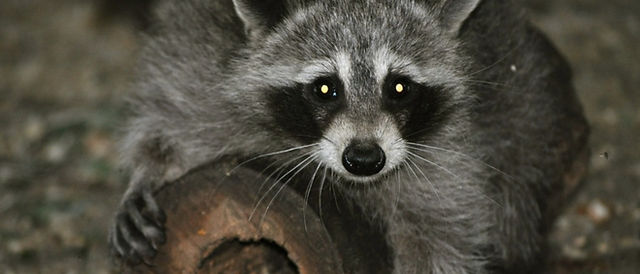Recognizing the Requirement for Animal Control Burlington in Urban Environments
Recognizing the Requirement for Animal Control Burlington in Urban Environments
Blog Article
The Function of Humane Wildlife Removal in Protecting Resident Ecosystems
Humane wildlife removal is not merely an honest factor to consider yet a critical element in securing regional ecological communities. By prioritizing non-lethal techniques, it deals with the fragile equilibrium between human development and wildlife habitat conservation.
Recognizing Human-Wildlife Disputes
Human-wildlife disputes usually emerge when the natural environments of animals converge with human tasks, resulting in competitors for resources and room. As urbanization and agricultural expansion remain to encroach upon wild animals territories, pets such as deer, raccoons, and prairie wolves locate themselves in closer closeness to human populations. This closeness can lead to damaging impacts on both wildlife and people, as animals may create damage to crops, facilities, and personal effects while people might inadvertently damage wild animals via habitat devastation and other anthropogenic stress.
The intricacy of these problems stems from a variety of factors. Adjustments in land usage, environment modification, and the fragmentation of communities usually force wildlife to adjust to new atmospheres, in some cases leading them into business or residential locations. Furthermore, the accessibility of human-generated food sources, such as trash and animal food, can draw in wildlife to human negotiations, exacerbating communications and potential conflicts.
Resolving human-wildlife disputes requires a nuanced understanding of pet habits, ecological characteristics, and socio-economic considerations. By researching these interactions, preservationists and policymakers can develop approaches that intend to minimize disputes while preserving biodiversity and maintaining environmental equilibrium. The objective is to promote conjunction and decrease unfavorable influence on both human communities and wildlife populations.
Importance of Non-Lethal Techniques
Reducing human-wildlife problems necessitates methods that focus on the wellness of both animals and humans. Non-lethal methods of wild animals removal personify this ethos by providing options that stop harm to wildlife while addressing human issues. These methods include exemption strategies, habitat alteration, and making use of deterrents to dissuade wildlife from entering human settings (wildlife removal Burlington). By employing such methods, we can handle wildlife interactions without considering dangerous procedures, consequently protecting animal populations and lowering honest worries connected with murder.
These techniques typically confirm extra efficient in the long term, as getting rid of private animals can develop a void that is promptly loaded by other members of the species or various types altogether. This can lead to a cycle of recurring removal efforts, whereas non-lethal deterrents address the root triggers of wild animals existence.
In addition, non-lethal approaches foster coexistence by informing the public regarding wildlife actions and encouraging harmonious living techniques. This recognition can lead to more sustainable human-wildlife interactions, inevitably protecting both neighborhood passions and animal well-being.
Advantages for Biodiversity
When non-lethal wild animals removal methods are utilized, they add considerably to biodiversity preservation. By ensuring the risk-free relocation of animals instead than their obliteration, these techniques preserve environmental balance and safeguard the integrity of environments.

Moreover, these approaches promote conjunction Read Full Article between humans and wildlife, minimizing adverse communications and protecting the rich tapestry of life that defines biodiverse areas. This approach encourages a deeper understanding and you could try this out regard for wildlife, cultivating neighborhood support for preservation initiatives. Ultimately, humane wild animals removal is an essential element in securing biodiversity, ensuring environments stay practical and vibrant for future generations.
Methods for Effective Removal
Carrying out efficient methods for gentle wildlife removal requires a thorough understanding of pet habits and environment requirements. This understanding serves as the structure for developing strategies that guarantee the secure and ethical moving of wildlife.
Another critical strategy is utilizing exemption techniques, which concentrate on sealing entry points to stop pets from going back to frameworks. This technique not only addresses the prompt concern yet likewise offers as a long-term option, lowering future problems between people and wild animals. The use of non-toxic deterrents and repellents can motivate pets to abandon areas willingly, complementing various other elimination efforts.
Capture and moving should constantly be a last option, employed only when pets position a direct risk or are not able to leave by themselves. In such cases, utilizing gentle catches and making certain the launch of animals in appropriate environments are vital to securing their well-being. Collaboration with wildlife professionals and adherence to legal guidelines even more boost the effectiveness of these approaches.

Promoting Coexistence in Urban Areas
Promoting coexistence in urban areas calls for a diverse strategy that balances human advancement with the requirements of neighborhood wild animals. Urban policymakers and coordinators have to integrate green spaces, such as parks and wildlife hallways, right into city designs to provide environments for native species. animal control Burlington.
Education and recognition campaigns are important in fostering a culture of conjunction. Residents require to recognize the value of wildlife and the duty they play in neighborhood communities. Workshops and informational sessions can outfit neighborhoods with understanding on just how to lessen conflicts, such as securing trash and making use of gentle deterrents to avoid navigate here wild animals breach.
Moreover, modern technology can play a significant function in promoting coexistence. The usage of wildlife surveillance systems, for circumstances, can aid track animal activities and educate urban preparation choices. Cooperations in between environmental companies, city governments, and community groups can even more strengthen these initiatives, ensuring that city advancement advances sustainably while respecting the ecological balance.
Final Thought
Humane wild animals elimination is important for maintaining eco-friendly equilibrium and biodiversity by using non-lethal techniques that reduce injury to pet populaces. Ultimately, promoting coexistence in urban areas fosters a harmonious relationship between human beings and the all-natural environment, ensuring lasting environments for future generations.
As urbanization and agricultural growth proceed to elbow in upon wildlife regions, pets such as raccoons, deer, and prairie wolves locate themselves in closer distance to human populations. Non-lethal approaches of wildlife elimination personify this ethos by supplying solutions that prevent harm to wildlife while dealing with human concerns. By utilizing such approaches, we can handle wild animals interactions without resorting to lethal steps, consequently maintaining animal populaces and reducing honest worries associated with killing.
Carrying out reliable methods for gentle wildlife elimination calls for a comprehensive understanding of pet habits and habitat demands.Humane wild animals elimination is important for preserving ecological balance and biodiversity by employing non-lethal methods that lower damage to animal populaces.
Report this page